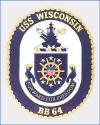So far we have shown that BBs are completely FUBAR, failing to use their main battery when targets as big as heavy cruisers are present, something which never happened historically even down to DD sized targets and has zero justification.
Tom,
I actually think you're on to something ( an issue with gunnery ) here ... but just to point out that there are some exceptions ...
At Surigao Strait, three battleships did the majority of the shooting: West Virginia, California and Tennessee. All three ships had received total reconstructions during the war and installation of Mark 8 fire control radar. A fourth battleship contributed meaningfully: Maryland, refitted before the war and fitted with Mark 3 fire control radar during the war. Also present were Mississippi and Pennsylvania. Mississippi received a total reconstruction before the war and was fitted with Mark 3 fire control radar during the war. Pennsylvania received an extensive refit during the war and was fitted with Mark 3 fire control radar. Mississippi managed only one salvo during the engagement. Pennsylvania failed to fire.
pulled from
http://www.navweaps.com/index_tech/tech-079.htm


















